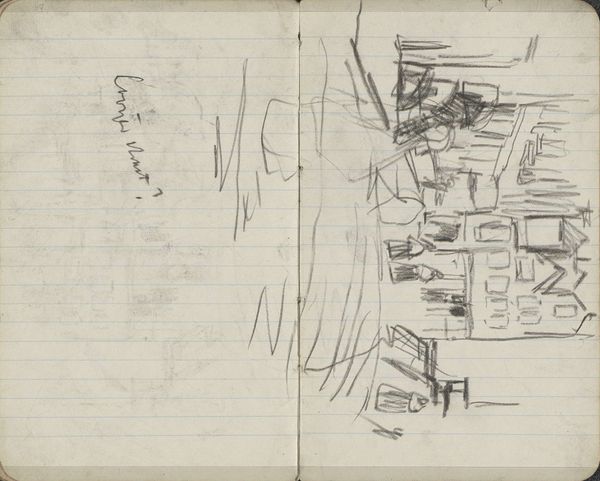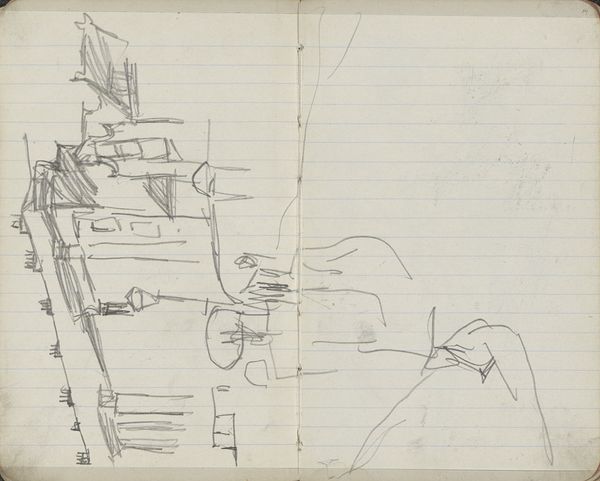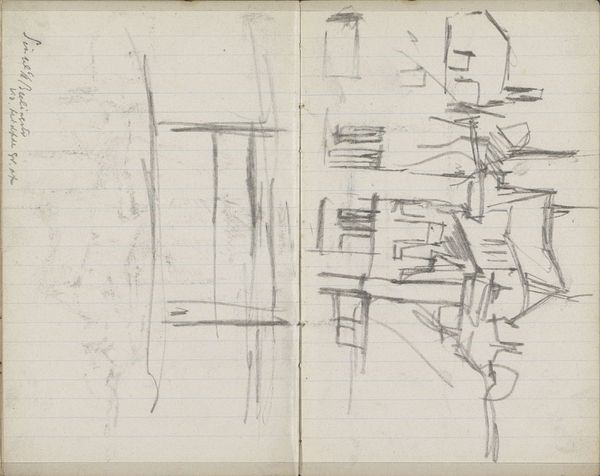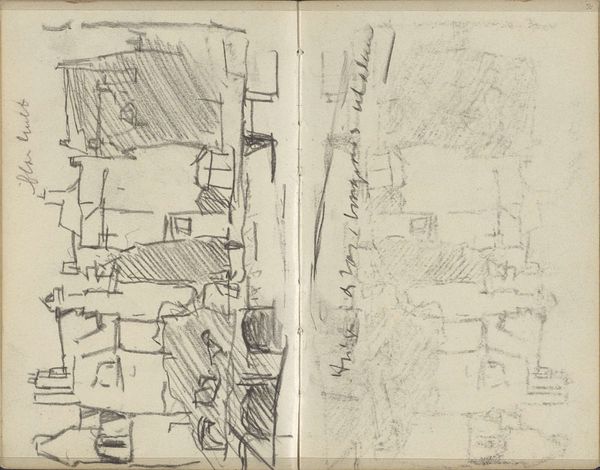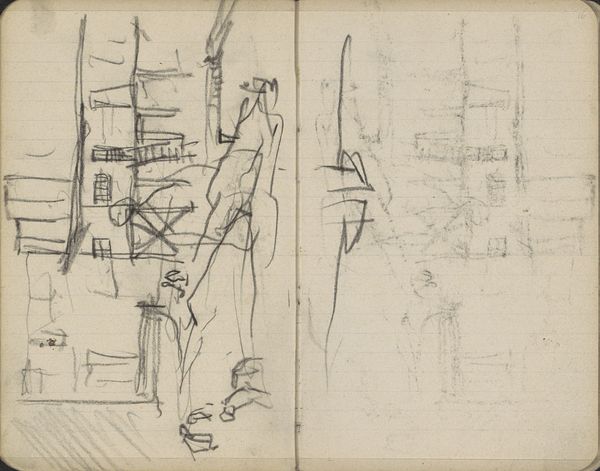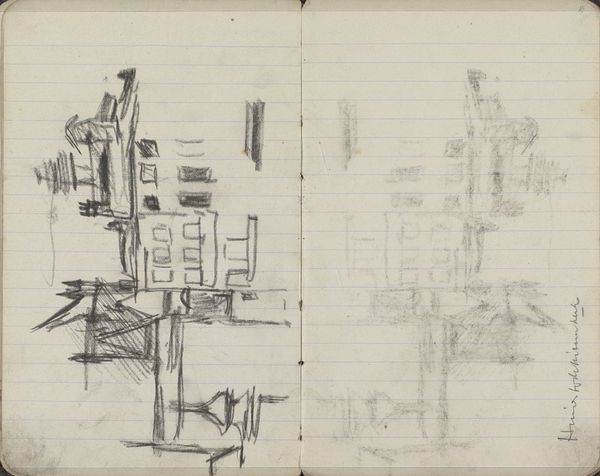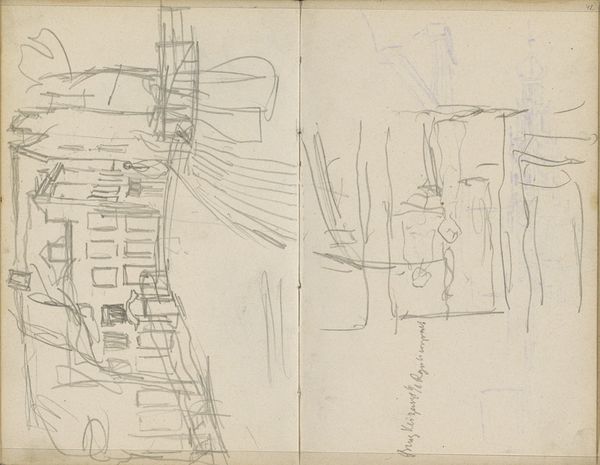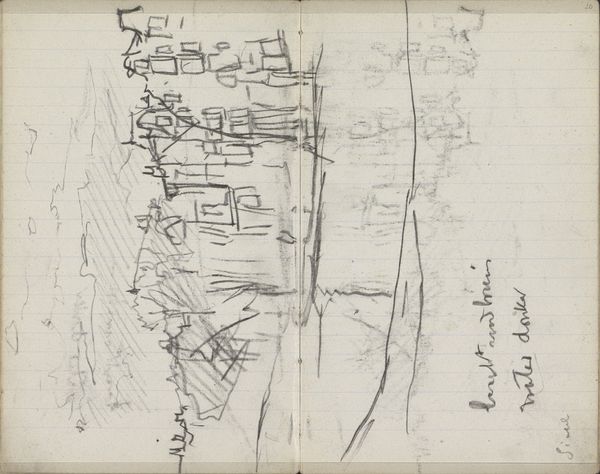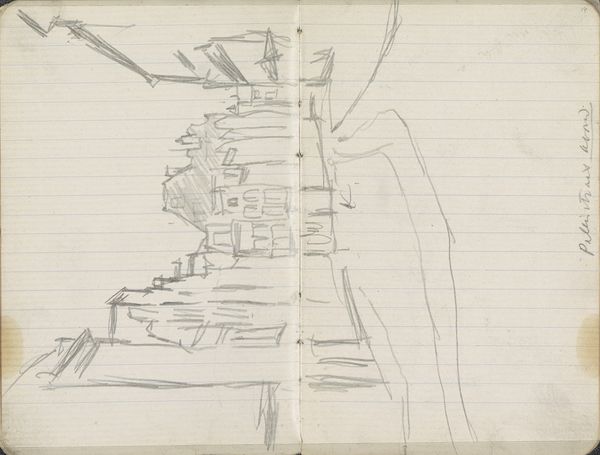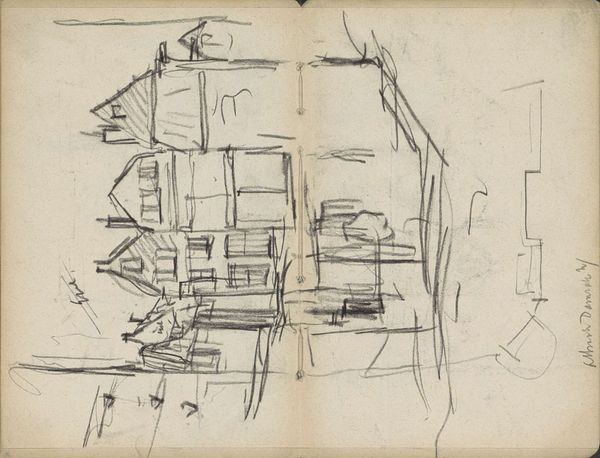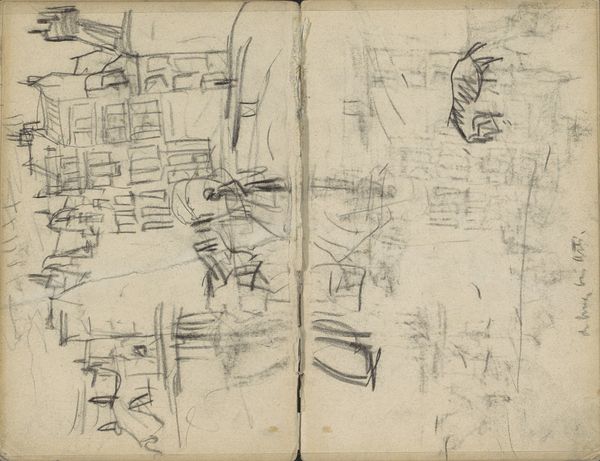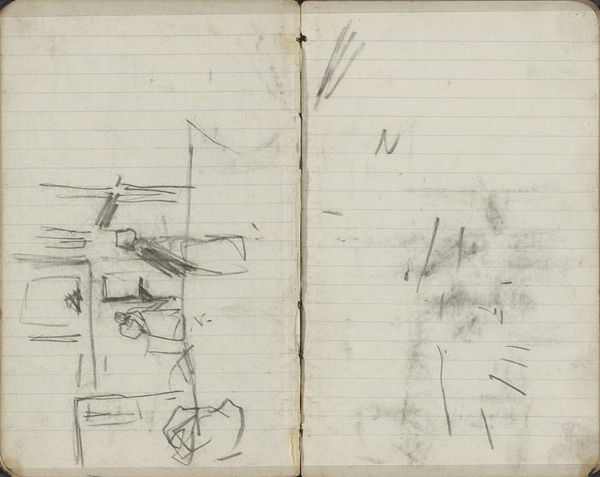
Copyright: Rijks Museum: Open Domain
Editor: Here we have George Hendrik Breitner's "Gezicht in Amsterdam," dating from around 1896-1897. It's a drawing, seemingly in pencil and perhaps pen, right out of the artist's sketchbook. I'm immediately struck by the sketchiness; it feels very immediate, like a snapshot of a moment in time. What do you see when you look at this piece? Curator: Indeed. The piece embodies the core tenet of immediacy. Consider the linearity of the strokes. Breitner seems primarily interested in the spatial relationships established by these lines, wouldn't you agree? How the suggestion of depth is accomplished through these simple contrasts. Editor: Absolutely. The lines are so sparse, yet they somehow convey a sense of place. But is there anything else beyond the pure lines and shapes that contributes to its visual impact? Curator: Notice how the ruled lines of the notebook page persist throughout the work. They're integral to the composition, disrupting the pictorial space. The formal presence of the lines undermines any purely representational function. Do you follow? Editor: I do. They're like a grid both supporting and interfering with the image. It's almost like the structure of the notebook itself becomes part of the subject. They give it a kind of rhythm. Curator: Precisely. It showcases an acute awareness of the intrinsic qualities of the medium itself. By revealing the surface, Breitner draws our attention to the constructed nature of the image, to its essential flatness. Editor: That's fascinating. I hadn't considered the notebook lines as such a deliberate part of the piece, but that adds a whole new layer of complexity to it. Thanks for illuminating that! Curator: The pleasure is mine. Breitner masterfully manipulates form and structure here to elevate the ordinary cityscape to an engaging object of contemplation.
Comments
No comments
Be the first to comment and join the conversation on the ultimate creative platform.
